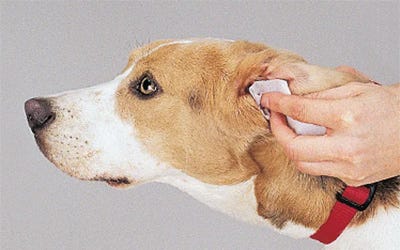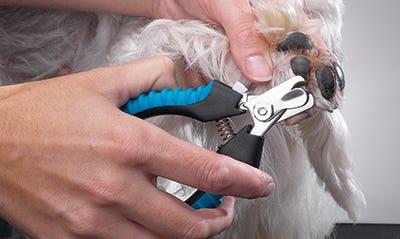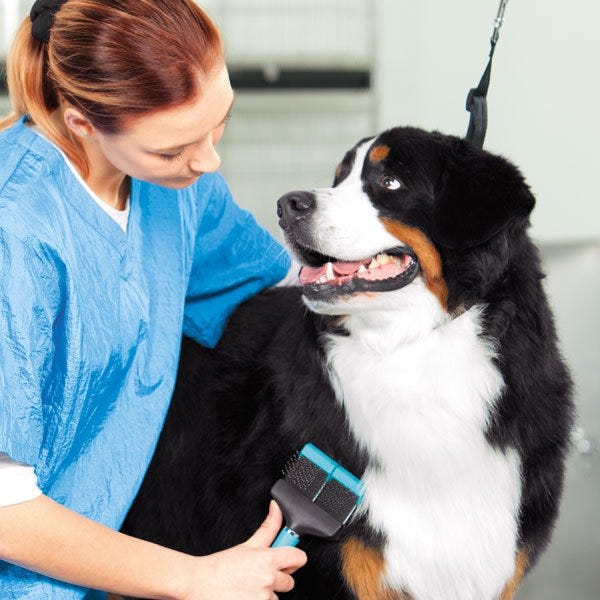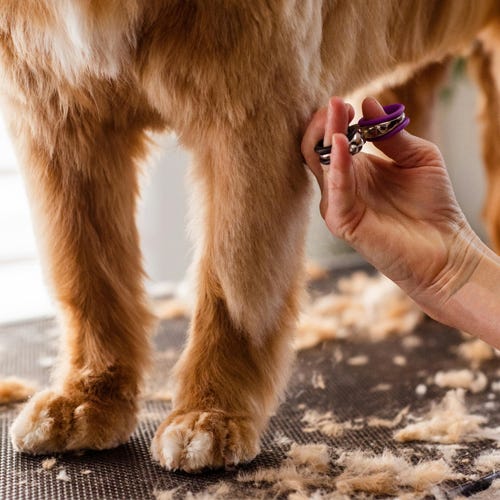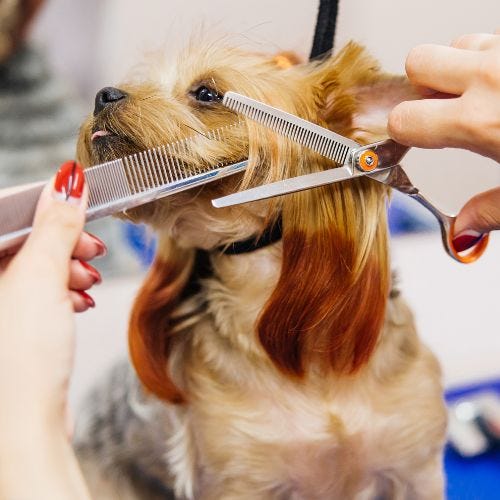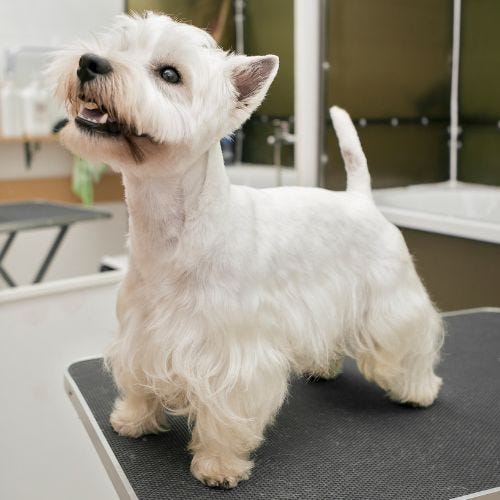There you are, bathing a dog you are about to groom. As part of your routine, you lift its ear so you can flush it with your favorite ear cleaner and find the area around the ear canal red, hot, and very irritated looking. The dog is clearly unhappy that you are even looking at it. What should you do next?
Because of the way dogs’ ear canals are shaped, they are more prone to suffering from ear infections (also known as otitis externa) than humans are. Most commonly, the condition is caused by bacteria, yeast, or sometimes a combination of the two. Ear infections are among the most frequent infections seen in dogs. Certain breeds seem more prone to ear problems than others; as groomers, we often notice them in pets with long, heavy ears, such as Cocker Spaniels, Poodles, and Old English Sheepdogs. Ear infections are uncomfortable at best and painful at worst. Yet, for some reason, a certain percentage of pet owners either leave infections untreated or give up treating them when the condition is not easily fixed.
While many groomers clean dogs’ ears as a part of a complete grooming routine, sometimes the wisest thing to do is leave an obviously unhealthy ear alone and refer the pet owner to their veterinarian for treatment. There are several reasons for this:
- Many ear cleaners are formulated with an alcohol base. When alcohol meets the inflamed skin of the affected ear, it can cause discomfort and possibly damage the sensitive skin further.
- Hydrogen Peroxide based cleaners can also cause further irritation to a compromised ear canal.
- If the ear is cleaned, removing some of the discharge and debris, it can potentially make the veterinarian’s diagnosis more difficult.
- Cleaning an infected ear will be painful to the pet, causing it more discomfort and possibly inviting it to bite in defense.
- Plucking hair from an infected ear can potentially allow the offending yeast and/or bacteria to become more deeply entrenched into the hair follicles.
- If the ear infection becomes worse or more noticeable to the pet owner after grooming, they could potentially blame the routine cleaningfor the condition.
- Taking a photograph of the visible irritation and maintaining it for your records can be a good idea so that if there is any question from the pet owner after the grooming, you can demonstrate evidence that the ear showed signs of inflammation when it came in for styling service.
In situations like this, informing the pet owner that the dog appears to have an irritation and that you withheld cleaning the ear and recommend a veterinary visit is a good action plan. It is recommended that you refrain from sounding like you are diagnosing anything but merely pointing out your observations. I find that mentioning that ear problems can cause pain often makes the difference in the owner making a doctor’s appointment sooner rather than later.
By Daryl Conner, MPS, MCG
Daryl Conner has been devoted to making dogs and cats more comfortable and beautiful for almost 40 years. You can find her happily working at FairWinds Grooming Studio with her daughter and infant granddaughter, or typing away at her latest grooming-related article. Daryl was awarded both a Cardinal Crystal Award and Barkleigh Honors Award for journalism. She shares her meadow-hugged antique Maine farmhouse with her practically perfect husband and too many animals.


